According to You: The most loved/hated carburetor induction system?
We asked about induction systems of the carbureted variety, and you gave us the systems that bring home the bacon. Or not, as some of them were the opposite of smashing success. But that’s the joy in Hagerty’s According to You, as we wanted your unvarnished feedback on carburetor induction systems, be it good or bad.
So let’s see what the Hagerty Community came up with, for better (like a Holley) or worse (like a Chrysler Lean Burn)!
Weber Love

@Ryan: A roommate in the ’80s had a Sunbeam Tiger with a built 302 and 4x downdraft 2v Webers on a Cobra manifold. Stacks and screens, no filters. The intake noise raised hair on one’s neck.
@Jonathan: My favorite setup is the dual Weber 48 IDA’s on a VW Beetle engine.
@David: How about replacing my “Most Hated” fuel system with what quickly became my “Most Loved” fuel system?
I bought a Platinum Metallic 1980 VW Scirocco in 1981. Dude had put 50K miles on it in that one year by doing a long interstate commute in it every day. If not, I would have never been able to afford it. Shortly after buying the car, I followed two friends to an SCCA autocross event about 50 miles away. One friend drove his 911 SC and the other his 914-6. It was all I could do to keep them in sight. Luckily, they were kind and I managed to stay within sight. So I got there, registered, and did a couple runs. There was another Scirocco there. It was outwardly identical except red, and he was besting my times by a significant margin. Now, I’m not saying I was some kind of driver hero, but this was not my first autocross (just my first one in this car). So I introduced myself and asked how he was so much faster around the cones than I was. He popped the hood and pointed to a pair of Weber side drafts. He said, “Throw everything K-Jetronic into the garbage and get you a pair of these.”
I found a used pair and did just that within the month. BOOM. I was amazed at the transformation the car went through with that one upgrade. Of course, that was just the start. Over the next couple years there was a decent cam, a header, upgraded suspension, rally lighting, stereo, window tint, etc. Loved that car.
@Tim: I’m pretty sure this won’t count, but I had a ’69 Opel GT purchased from a friend. It had been upgraded from the factory carb to a pair of Weber 45DCOE side draft carbs. Really gave that car a boost in power. The car had a lot of body mods as well—targa roof, extended rear end, wide body fender flares integrated, etc. My only regret is that I was older and had more funds to sort it all out. The interior needed an overhaul and it needed some other work as well. I had a dream of making it look like a Dino.
No love lost for this Weber

@Alex: The worst ever is easy: Maserati Biturbo and its Weber carburetor. A fuel system shouldn’t start engine fires so frequently, and putting it under a flammable hood blanket was just an added bonus.
Love the Carter AFB/Edelbrock

@mrhemi: There’s nothing like the dual Carter AFBs on a 426 Hemi properly tuned. Even the FSM tuning and synchronization procedure is a pleasure to perform.
@Donny: I like the Edelbrock we put on my family’s ’67 Firebird. I haven’t had to touch the thing in years. It has never been hard to start. Never has idling issues. Automatic choke works in the cold. No vapor lock when it’s hot and sitting at a light. I installed the thing eight years ago, and it’s just been stone-dead reliable. I checked the plugs a few months ago and they were all clean.
Hate the E4M Quadrajet
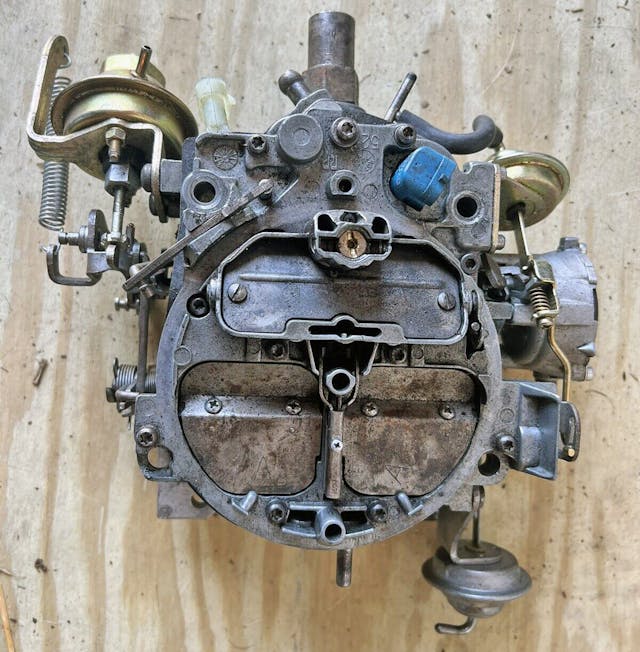
@Oversquare+Bore: I grew up in the late ’70s/early ’80s and saw firsthand the pathetic output of Detroit V-8s (from all the manufacturers). When I was 16, I got a used 1981 Camaro. Then 1981 happened to be the worst of the terrible years for GM products. It was the first year of the computer-controlled carburetor, and 1981 was also in the displacement downsizing era—my 3600-pound Camaro had the 267 -cubic-inch small-block V-8.
Long live the Cross Ram

@Lash: No love for the old Mopar Cross Ram? Just the mention of Lean Burn gave me a headache.
@Uncle Buck: For sheer WOW factor, I don’t think anything touches the 413 long tube cross ram set up.
Hate the Quadrajet?

@Mike: Try though one might, the Quadra-Bog remains indefensible.
@TG: I’m sure the Quadrajet will come up in this discussion as the worst, junkiest carburetor out there. However, it has been my general experience that 99.2 percent of the people who make that statement have no idea how to work on a carburetor, took one off of a junkyard motor, slapped it on theirs … and expected it to just work!
@Marc: The problem with the Quadrajunk was the metering rods. If a heavy-handed (person) didn’t carefully assemble the carb, the metering rods would get bent. I learned that the hard way.
@DUB6: We had one that was both most loved and most hated at the same time. Back in the mid-’60s, when a couple of friends and I were pretty seriously getting into stoplight drag racing, my buddy got hold of a ’55 Nomad that purportedly had a “built 265” (whatever that meant—we were way too young and none too smart) with a cross-ram and two Rochester Quadra-Jets. Looking back, it was a totally weird combination, but at the time, it was just impressive when we opened the hood. We weren’t able to identify whether it was a 265 or a 283 (online numbers researching was years away, and honestly, who cared; telling someone whose doors we’d just blown off it was “just a 265” was priceless), but that SBC had some sort of hurky cam, and for the most part, all that carburation wasn’t too much for it.
But it was heck to both tune and keep that way. We’d get it to go great guns at WOT, but it wouldn’t idle. Then we’d get it to idle, and it’d stumble about halfway through the powerband. But when it all clicked, it was really a terror for a heavy car with not much engine—just one of those freakishly quick cars that sometimes happened.
Love the Quadrajet?

@Tinkerah: A clean, leak free Q-Jet is as cheap, well performing, and reliable as you can get.
@Bob: Q-Jets were a great street strip carb. Plenty of tuning parts: Jets, metering rods, springs, secondary rod hangers, idle emulsification tubes, well seals, etc.—you name it. The days of carbs may be over but not forgotten. I still have four or five on the shelf.
@Peter: Loved the Q-Jets! I tricked-out many carbs in SoCal in the mid-’60s and early ’70s for friends, relatives and myself. My favorite to trick-out and the most to respond were the GM Quadra-Jets. Decent fuel economy on the small primaries, but open up the throttle and when the giant secondaries open the car will launch! Had a ’67 HO GTO and ’70 Ram Air IV GTO and experimented with different carb systems, including a 1966 GTO Tri-Power set up, a 1000 cfm ThermoQuad, two Carter AVS’s (dual quad), Holly 850 Double Pumper, etc., etc., but I went back to the Q-Jets for best overall performance.
I liked the Pontiac over the Chevy Q-Jets for one reason: Pontiac carb fittings had longer threads; also the inlet was in-line as the Chevy’s were off at 90 degrees. Also Chevy carbs had lesser quality as the castings crumbled easier, bottom fuel bowl plugs leaked, etc.
@Jim: I’m an Olds man, so Q-Jets are a way of life, and my favorite. Invariably, when I had a bad running Q-Jet, it was either an original in need of a rebuild or most likely had already been rebuilt by someone who should have their screwdriver operators license revoked.
Q’s have some well known issues, such as leaking fuel bowl welch plugs, worn throttle shafts, bad choke pull-offs, etc. Most home re-builders do not fix any of the known issues (or even know of them), but the owners will say, “I rebuilt it and its still junk.” They then go out and buy a new anything and say how much better it is then a Q!
@Ryan: Q-Jet is a wonderful carb when matched with the motor/trans/hearing and tuned properly. And with the air cleaner lid flipped, makes the most awesome intake “AH-OOOOO” noise. My high school ’67 Impala SS 396/350 had a Quadrabog. But it didn’t, because my uncle knew carbs: no bog, just ah-ooo!
@Daniel: I have two Pontiacs with original equipment Q-jets. The ’69 GTO Ram Air III carb has not been off the motor since I bought the car in 1996! The ’68 Firebird 350 HO carb has not been off the motor since at least 2002 when my brother bought it from the original owner; I have owned it for five years. I also ran Q-jets on my 455 Olds-powered jet boats for many years.
Correct calibration is challenging if adapting a non-original carb. Now the malaise era: I bought a ’75 Camaro LT in 1980, and I could not get the jets and rods to calibrate in the Q-jet, so I mounted an 1850 Holley, recurved the HEI ignition, and it ran great with improved gas milage as well.
All Hail Holley

@Oscar: Have always had good luck with Holley carbs. I am running a modified 390 on a blown Chevy 3.2L, 60-degree V-6 in a 1800# hot rod right now and it runs great!
@Dean: I am partial to the Holley Double Pumper, mainly because I had two old Novas with this carb and have learned how to tune them. Our current ’63 Nova SS has a 350, solid flat tappet cam, Holley cylinder heads, Edelbrock Performer RPM intake, and M20 Muncie four-speed and 750 double pumper. Runs like a champ, makes good power, and gets reasonable fuel economy. I know darn well though that swapping the intake and carb to a Quadrajet would net me better fuel economy and likely better throttle response. As others have said, the Quadrajet is a great carb if tuned properly.
@Gerald: Yep, Quadrajets were terrible, but Holley came up with an easy fix called a “Spread-Bore” that bolted directly onto the GM manifold. My ’68 Corvette 327/350 ran beautifully after the switch. Amazing how time turns junk into gold. Many years later, someone paid $50 for the old Quadrajet at a garage sale.
Support Skinners Union!
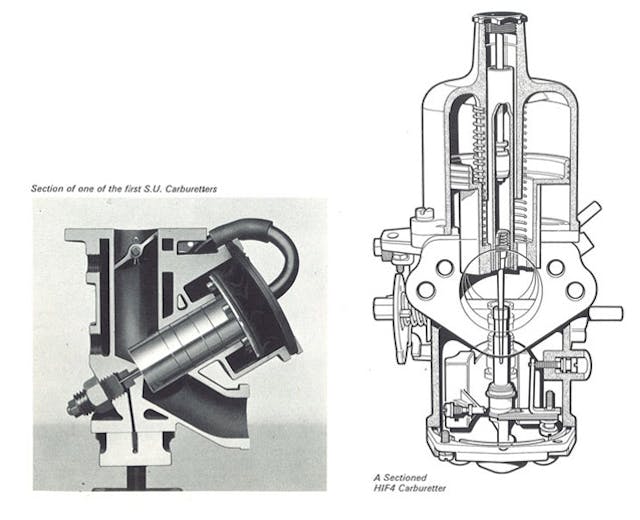
@Stuart: Why no mention of true, variable venturi, constant-vacuum carburetors? In particular, SU: This is a brilliant design of true engineering elegance. With its continuously-variable fuel metering matched to venturi opening, it is the transition design between carburetors (or carburettors) and throttle-body fuel injection.
In the hands of a moderately-experienced person, they are dead-easy to tune. And, they stay that way for a long time. Unfortunately, all too often, some ignorant clod got his mitts on them and then they usually didn’t perform well. That’s how they got a bad rep in the U.S.
@Isaiah: I have SU carbs on an MGA and think they’re simple and easy … but man, you should hear the weird comments I get. People seem to hate them. I had the Weber downdraft replacement on a MGB, and you couldn’t dial out the dead spot before the secondaries: if you check the MGB forums you’ll see it’s a known and accepted feature, so I never understood why Webers were better than SUs.
Malaise for good reason?

@David: My least favorite? Any of that malaise-era equipment. Lean-burn? Shudder.
All were necessary steps to get us to the modern era, but if you have to make make that stuff work to register your car (say, in California) it’s a real hassle.
Rochester Tri-Power
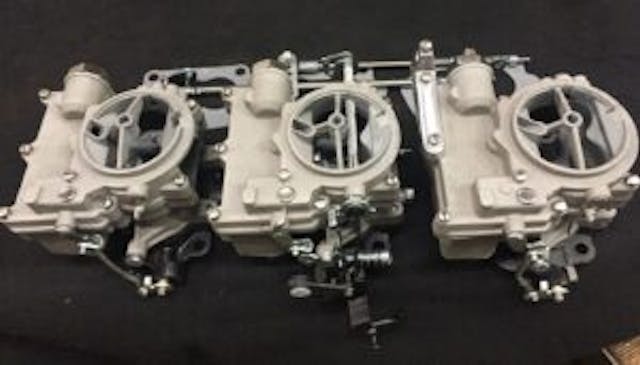
@Calvin: My favorite is the ’66 Pontiac GTO with the three Rochester two-barrel carbs. This tri-power setup is super cool and makes as much power as a big Holley carb but runs as a two-barrel until you need more juice.
@JeffS: The ’65 and ’66 versions used a mechanical linkage for carbs 1 & 3 (with the center being the primary), and worked well. The ’64 version used a vacuum system for the secondary carbs, which was a terror. An induced (think turbo lag) pause between hitting the gas and making power, and the scary part, letting off the gas with limited vacuum (wide open throttles) created a longer delay in slowing down the motor.
Annoying at the “go” part, terrifying at the “whoa” command, especially with those four-wheel drum brakes. Most ’64 setups I’ve seen were upgraded to mechanical linkage, at least the ones that survived. Lots of underhood roar with air flowing through those three tiny air cleaners (with shiny chrome covers).
@Tinkerah: I love the Tri-Power on my T-Bucket. Exposed engine maximizes the visual impact. Halfway into the pedal, you’re suddenly pushing against three times as many return springs and the power REALLY starts coming on. Contrary to all the rumors you hear about how difficult they are to set up from blowhards with no experience, they are the easiest in all of mine.
Anything side draft
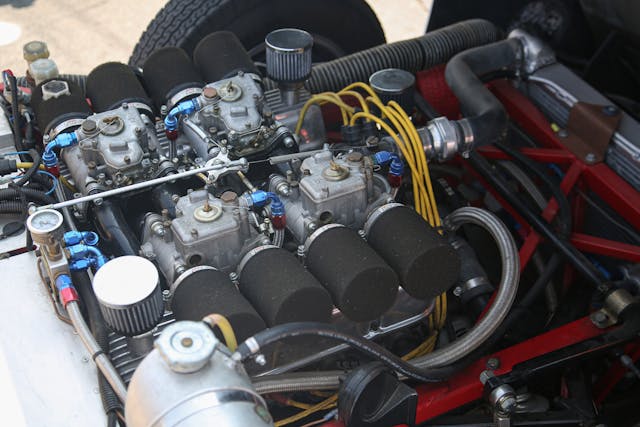
@David: My favorite form of induction is multiple side draft carburetors (or ITBs, in my case) with no air box and exposed velocity stacks. Weber, Dell’Orto, Solex, Mikuni—whatever is used, they look amazing and sound even better.
So, how did the Hagerty Community do? What carbs did we get right, and which ones did we miss?
***
Check out the Hagerty Media homepage so you don’t miss a single story, or better yet, bookmark it. To get our best stories delivered right to your inbox, subscribe to our newsletters.

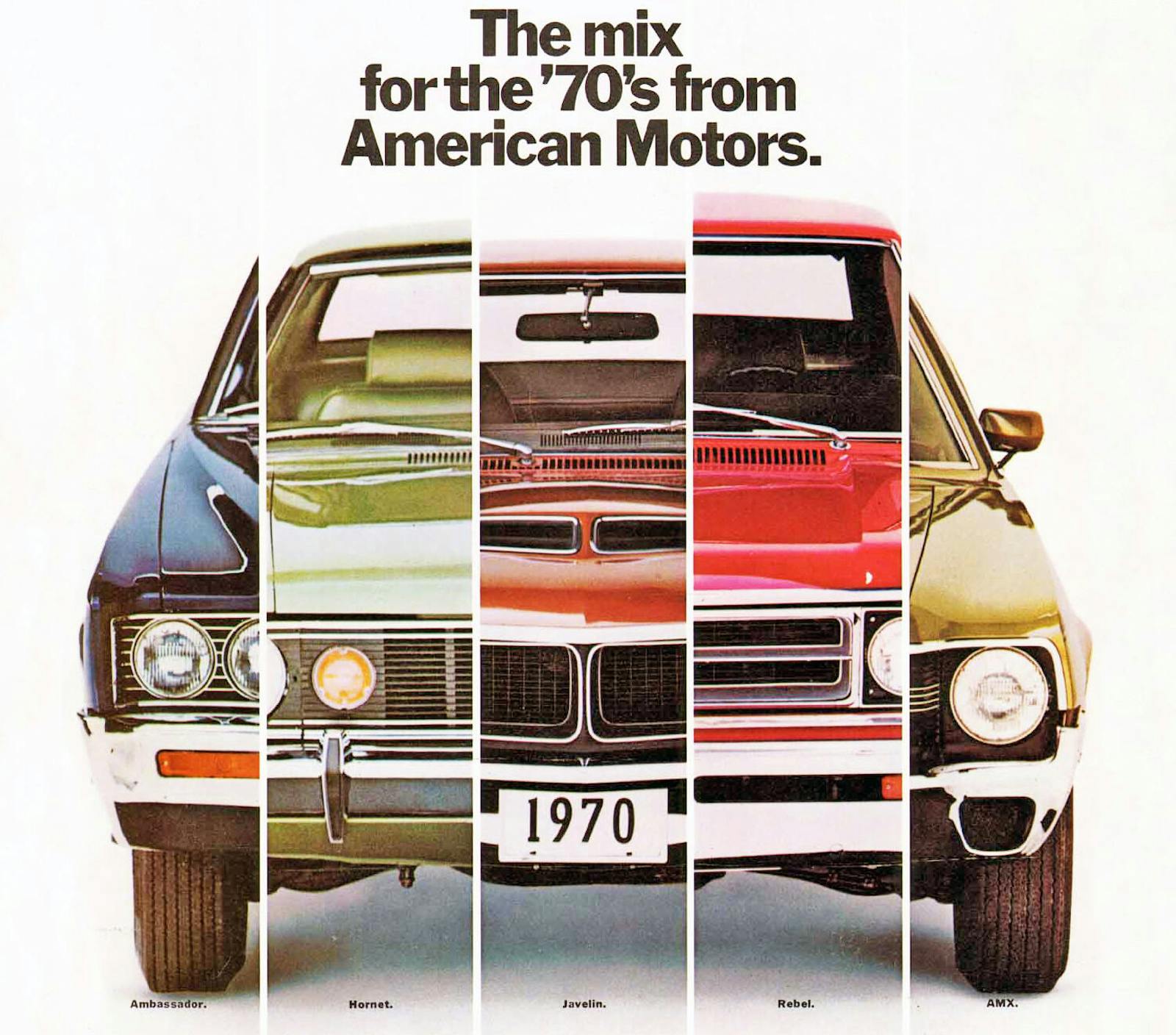

On Webers…… I replaced the Q-jet on my ’69 Lemans Sprint [OHC 6] in 1971 with 3 45DCOE Webers. MAN, what a difference when paired with the Clifford long tube headers…. Never had to dick with the carbs. Used the same mains & air correctors supplied by Clifford. “Keeping my foot out of it”, and limiting speed to 60mph on the highway I could coax 19-20mpg out of it. Around town, or if I was having some “fun”, one could almost see the fuel gauge drop…. and now I have to use 100LL avgas…. glad I kept the car all these years.
An underrated engine and you have the sweet set up. I’m not even a GM fan!
Somehow you missed one of the best carburetors ever built, the Autolite 4100. Simple, reliable, easy to change the jetting and tune, and comes in a couple of different venturi sizes to match up with your engine. It was replaced in 1967/8 by one of the worst carburetors ever built, the Autolite 4300. Leaky, unreliable, difficult to tune, makes the Q-jet look like a good idea.
In 1982, my girlfriend’s 1974 Toyota Corona had worn out its engine due to high milage. The carburetor was a down-draft 2-barrel Hitachi. A company was importing rebuilt Japanese-market engines (not legal for use in Japan), so I replaced her SOHC engine with its DOHC equivalent, which came with a cross-flow head and twin Mikuni-Solex side-draft carbs. Some rearrangement of exhaust piping and throttle linkage was required, but what a difference! Jetting was perfect and it breathed through K&N air filters with velocity stacks inside. The low-end power matched the old SOHC engine’s, but it really came alive with revs (no tachometer) such that it felt like it had taller gearing in its four-speed tranny. The Corona, which had previously felt like it was over-revving at highway speeds, now felt happy at 90 MPH! Those Mikuni-Solex side-draft carbs stayed in synch and never needed any adjustment.
The first pic of the weber: on a maserati birdcage! Doesn’t get any better than that….
The Chrysler I take system is called a LONG Ram, not a Cross ram. Big difference and came in two lengths. The cross ram came later with dual carters and should have been listed here. The 68 Super Stock Hemi’s were filthy and the best looking engines to come out of Detroit.
The Edelbrock AFB is a good carb but the newer pro versions much better than earlier. I run a Holley Street Avenger and it works well. As a testament to Holley, the folks that run an 850 DP on a 350ci in a street car is insane overkill, but demonstrates the ultimate flexibility of the dual bowl wonder.
The carb strangely left off this list was tha Carter Thermoquad. Among Mopar guys it is either referred to as the “Thermobog” or the “Plastic-Fantastic”. Properly set up, they are excellent. Unkept, they are a nightmare.
Skinners Union are simply the best. No stupid replaceable jets like the Webber or their Italian counter part Dell’Orto.
The design is simple, hardly any moving parts. Weakest link is the throttle shaft which is repairable.
“Webber or their Italian counter part Dell’Orto. ”
Where did you think Eduardo Weber came from?
The Q-Jet is a very versitile icarb but has a lot of parts that need to be put together in a certain sequence. I t was used on 6 cylinders to 500 ci Caddys. Once you took the time to learn how to assemble, play with the jets, hangers, metering rods, you could really fine tune it well. The bog was simple to fix. It was lean out condition as the secondaries opened up. A spring controls that opening. Many differnt springs were available. 442 had special set of metering rods with 3 tapers, which really fined tuned mid and WOT.
It was a trial and error process, but once you got past the noobie stage, it was a fantastic infinitley adjustable carb. Lots of metering rods,and hangers that were available. I rigged up a switch with a light, so i could tell just before the secondaries opened for max primary operation. Cruised at that point. Loved that carb.
THANKS! Great article and Great comments. Many of us have our favorites based on what worked for us. I had great luck rebuilding the OE Carters (AFB and T-Quad) and Rochester Q-Jets. SU’s were also a breeze. But I read and followed the manuals. If you set those carbs up by the book – you were GOLDEN. Somehow I never really wrapped my head around Holleys. Follow all the instructions and you still had to mess around and mess around – sometimes even during a road test.
I ALWAYS wanted one of those Cross Ram Intakes on my big block Coronet. Probably just as well I never found one I could afford. Always wanted some sort of six-pack / Tri[power as well. Gotta be old to remember CARBURETOR LUST!
Over the years I’ve had em all, AFB’s, Carters, Q’s, and whatever Ford used at the time. The best carburetor
Ever made was an updraft on my 56 Ferguson tractor. Never any problem, easy to set, idled well, and never let me down. Zenith should have made auto carbs.
Zenith made TONS of carbs for autos .. but proably most were before your wrenching era .. think Model T and 4 cyl chevy motors .. flathead Dodge/Plymouth 6cyl in the 1927 thru WW2. Go LOOK at an antique auto show.
1981 was not the first year for computer controlled Q-jets. My 1980 California edition Corvette with the 305 had a computer Q-jet
Sidedraft Solexes on the 2 1800ti BMWs I owned back in the late ‘60s were good, but I always lusted after Webers that we’re used on the 1800tisa. Man, those cars could move, and hardly anyone knew what they were!
Anyone who was so ill informed as to not be able to make a Quadrajet run should go back to washing dishes. Not that there is anything wrong with washing dishes, but you sure shouldn’t be at carbs,
No Rochester 4-jet? My buddy has a brand new one still in original bag and box.
SU’s — I never quite got the hang of adjusting them on my MG-B. But overall, that was a car designed to be worked on as a substitute entertainment for driving — at least in England, the petrol was like $2 a gallon (yeah, Imperial gallons, but still way expensive).
A little contrarianism…I learned to work on carbs with a simple, one barrel Solex 32PBIC–it was the manual choke version (from a Peugeot 403) of the automatic choke carb used on a Dauphine, and adapted to my 4CV. Thanks to a “Tuning the Solex Carburetor” book from Arnolt (yes, that Arnolt) who was the Solex importer at the time, I learned how to mathematically determine the main jet size, then base all the other jets on the main jet size. Ever since I have favored Solexes over Webers, simply because there were a lot more ways to adjust a Solex than a Weber, at least for the downdrafts. Example: Webers have a single accelerator pump body and injector nozzle; Solexes have a choice of three of each, plus an accelerator pump jet, which the Weber doesn’t have.
I’m still looking for a manual choke version of the Solex equivalent of a Weber 32/36 to try on my BMW 2002; bet I can tune it better than the Weber…